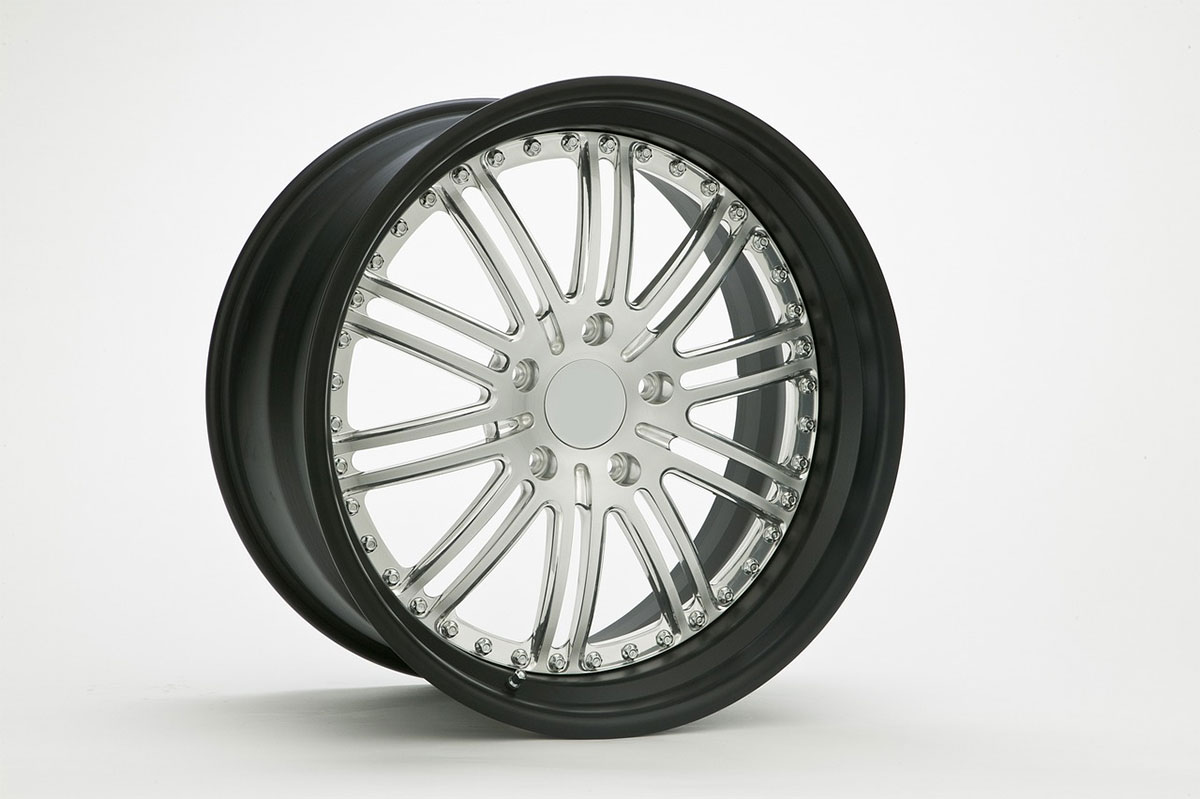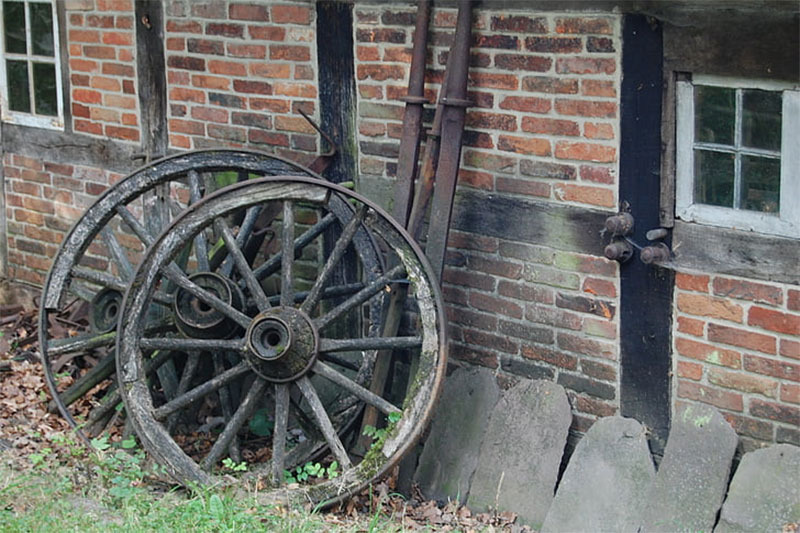The wheel, a revolutionary tool that completely changed the way people move and had a profound impact on the development of human society, has a history that can be traced back to prehistoric times.

In 2002, Slovenian archaeologists made an astonishing discovery when they unearthed the oldest known wheel ever used for transportation. This incredible wooden wheel, believed to be between 5,100 and 5,350 years old, not only showcases the advanced technology of our ancient ancestors but also stands as a testament to their ingenuity and resourcefulness.
However, the influence of the wheel goes beyond just transportation. In the ancient Sumerian city of Ur, archaeologists stumbled upon a stone potter’s wheel, dating back to around 3129 BC. This finding provides solid evidence that the wheel was utilized in pottery making even before it was widely used for transportation purposes.
By studying these fascinating artifacts and delving into their historical context, we are able to gain a more profound understanding of the wheel’s significance and the extraordinary accomplishments of early civilizations. The wheel not only represents a remarkable feat of human innovation but also serves as a reminder of the long-lasting impact of ancient inventions on our modern world.
When was the wheel invented?
According to the available archaeological evidence, it is widely believed that the Mesopotamian cultures were the pioneers who first conceptualized the idea of wheels. These innovative cultures primarily utilized these wheels for the purpose of creating pottery, thereby revolutionizing the way they shaped and crafted their clay vessels. However, it is important to highlight that the Ancient Greeks, approximately 2,000 years later, played a crucial role in further developing and expanding upon the concept of the wheel, especially in terms of its application for transporting heavy loads.
The early Greek design of wheels and axle carts was remarkably ingenious in its simplicity. It consisted of two sturdy rods, with a wheel and axle attached to one end. Despite their seemingly straightforward construction, these carts proved to be astonishingly effective in the transportation of large and unwieldy loads across expansive fields and diverse terrains.
It is truly captivating to observe that the invention of wheels occurred subsequent to the groundbreaking discoveries of agriculture, boats, and woven cloth. This positions the invention of wheels within the timeline between the Neolithic and Bronze ages, approximately around 3,500 BC.
Importance of the wheel

One reason why it may have taken a considerable amount of time to invent the wheel is that the concept of wheels and axles is not readily found in nature. While tools like levers or pitchforks are based on natural phenomena such as forked sticks, the understanding required for the development of wheels and axles was more intricate. Although instances of rolling can be observed in nature, such as with tumbleweeds and dung beetles, it was only when civilizations recognized the tremendous advantages of transportation that the necessity for a stable and stationary platform connected to a rolling cylinder became evident. This realization ultimately led to the groundbreaking invention of the wheel and axle, ushering in a new era of transportation and significantly simplifying the process.
In addition to transportation, the wheel and axle revolutionized various other aspects of human life. One such area was agriculture, where the use of wheeled carts and plows greatly increased efficiency and productivity. With the ability to transport heavy loads and till the soil more effectively, farmers were able to cultivate larger areas of land and produce more food. This not only contributed to the growth of civilizations but also allowed for the development of surplus food, paving the way for trade and economic prosperity.
Furthermore, the invention of the wheel and axle had a profound impact on the field of engineering. It became a fundamental component in the construction of complex machines and structures. From simple pulley systems to intricate gears and mechanisms, the wheel and axle provided the basis for countless innovations. The ability to transfer rotational motion efficiently and reliably opened up new possibilities for technological advancements, enabling the creation of mills, clocks, and various other mechanical devices.
While the invention of the wheel and axle may have taken time due to the absence of natural examples, its impact on human civilization cannot be overstated. From revolutionizing transportation to enhancing agriculture and enabling technological progress, the wheel and axle transformed the way we live and interact with the world around us.
The invention of the wheel – a closer look
Archaeologists made an intriguing discovery during the 1970s in Poland. They uncovered a ceramic vase known as the Bronocice pot, which dates back to approximately 3,635 to 3,370 B.C. This Neolithic artifact holds great significance as it contains the earliest known depiction of a wheeled vehicle. This finding leads us to believe that the concept of the wheel and axle may have originated in the vast Eurasian steppes.
One more evidence from the Tripolye people, who resided in present-day Ukraine, supports the early use of wheels and wagons. They contributed words that are related to wheels and wagons, reinforcing the idea of their existence during that time.
The first carts with wheels and axles had a fixed design where the wheel and axle turned together. To ensure stability and enable movement, pegs were utilized to hold them in place. As time went on, advancements were made, and the pegs were replaced with holes, resulting in a more robust construction. The subsequent challenge involved developing a fixed axle with revolving wheels. This required the axle ends and the holes in the center of the wheels to be smooth and round, minimizing friction and enabling seamless turning. The invention of copper chisels and gauges around 3,500 B.C. facilitated precise chiseling, making this achievement possible.
At this stage, the wheel had acquired its familiar shape, although it was still crafted from wood rather than modern materials. This remarkable discovery provides valuable insights into the technological progress made by ancient civilizations and their innovative development of transportation methods.
The wheel and present days
Wheels have undergone significant design changes throughout history as a result of advancements in material science and mechanical engineering. While their basic round shape has remained constant, their construction has become increasingly intricate and efficient, incorporating new materials and technologies.
The invention of the wheel revolutionized human civilization by opening up endless possibilities for the creation of various tools and devices. For example, the wheel gave birth to chariots, wheelbarrows, mills, and gear mechanisms, which have all played pivotal roles in shaping society and advancing technology. Gears, in particular, have played a crucial role in the development of inventions like steamboats, bicycles, and watches, enabling them to function smoothly and efficiently.
The wheel and axle combination represents a monumental discovery in human history, but its development was not without challenges. It required multiple groundbreaking advancements in various fields to occur simultaneously. Some archaeologists speculate that the wheel and axle might have been invented in a single location, with rapid adoption and spread taking place thereafter. Unfortunately, pinpointing its exact place of origin has become nearly impossible due to its widespread adoption and integration into countless cultures and civilizations.









